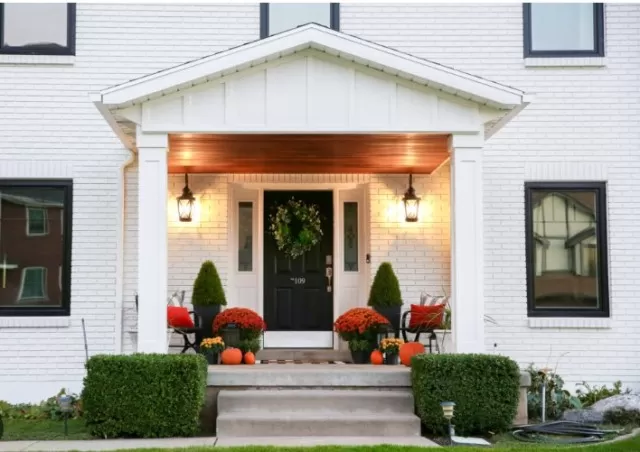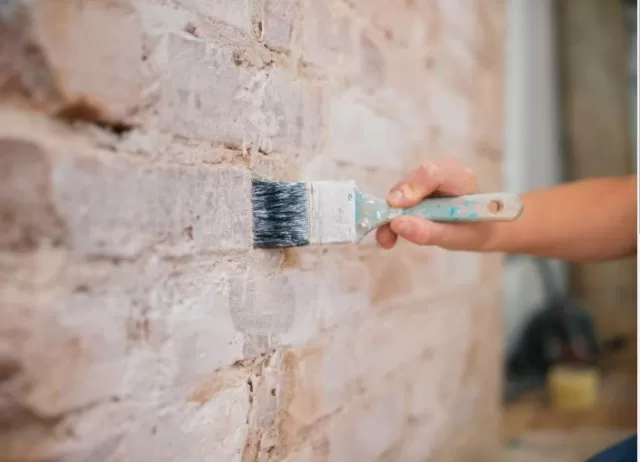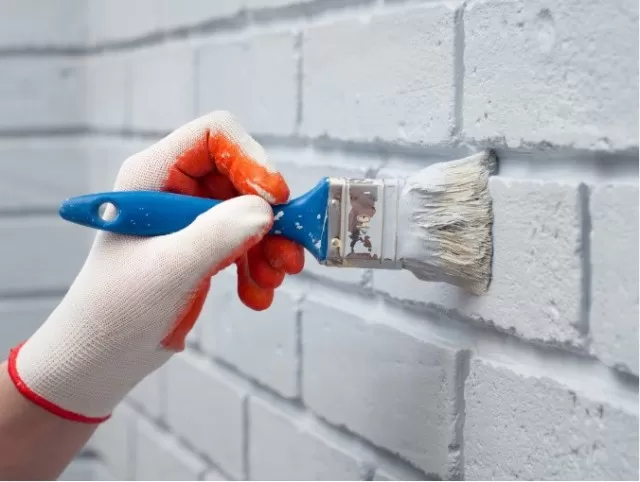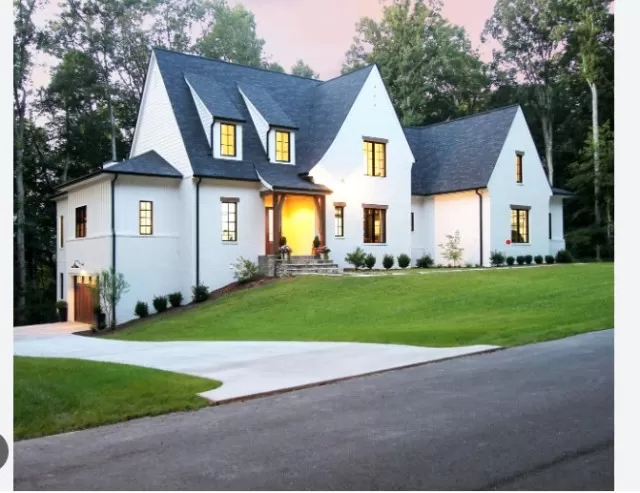What to Know About Painting Brick: Tips for Transformation. If you’re considering painting your home’s brick, there are some important factors to keep in mind. While it can give your space an updated look, painting brick requires time and effort, and it may be challenging to remove in the future. However, if you’re ready to take on this home project, here are a few essential things you should know to ensure a successful transformation.
The Benefits of Painting Your Home’s Brick
Painting your home’s brick can offer several advantages.
Not only does it improve the overall appearance of your home, but it also requires minimal maintenance and opens up a world of design possibilities for the future.
Expanding Design Options with Painted Brick

One of the key advantages of painting your home’s brick is the increased design flexibility it offers.
Over time, as you make changes to your home such as adding or removing windows, installing front stairs, or incorporating outdoor elements like lighting or planters, matching the existing brick can be challenging. By painting the brick in a color that complements your home’s overall color palette, you can seamlessly blend these additions with the rest of the exterior, creating a cohesive and harmonious look.
This allows you to have more control over the aesthetics of your home and achieve the desired design outcome.
Elevating Curb Appeal through Painted Brick
Painting your home’s brick can significantly improve its curb appeal, particularly if the brick is showing signs of wear or has an outdated appearance.
The process of painting allows you to choose a color that aligns with your overall design style and creates a distinct visual impact in your neighborhood. With a fresh coat of paint, your home can instantly appear more modern, vibrant, and visually appealing, making it stand out and catch the attention of passersby. This simple transformation can greatly enhance the overall attractiveness of your home’s exterior.
Reduced Maintenance with Painted Brick

One of the advantages of painting your home’s brick is the reduced maintenance it offers.
Brick is a porous material that can accumulate dirt, stains, and weather-related damage over time. By applying a coat of paint, you create an additional layer of protection against the elements.
Rain, snow, and UV rays can all take a toll on exposed brick, but painting can help shield it from these harsh weather conditions. The paint acts as a barrier, preventing moisture absorption and reducing the likelihood of damage.
As a result, you’ll spend less time and effort on regular brick cleaning and maintenance, allowing you to enjoy a more durable and low-maintenance exterior for your home.
Considerations Before Painting Your Home\’s Brick

While painting your home’s brick can offer numerous benefits, it’s important to be aware of the potential downsides before proceeding with the project.
Here are a few considerations to keep in mind:.
Irreversibility: Once brick is painted, it can be challenging to revert to its original appearance.
The paint forms a strong bond with the brick surface, and removing it completely can be difficult and time-consuming. Therefore, it’s crucial to carefully consider your decision and ensure you’re committed to the painted look long-term.
Maintenance: While painting brick can reduce overall maintenance, it doesn’t eliminate the need for periodic touch-ups.
Over time, the paint may chip, fade, or require repainting to maintain its fresh appearance. Regular inspections and maintenance will be necessary to keep your painted brick looking its best.
Natural Aesthetics: Brick possesses a unique charm and natural beauty that painting may cover up.
By painting brick, you may lose the distinct texture, color variations, and character that make it appealing in its original form. Consider whether preserving the natural aesthetics of your brick is important to you before deciding to paint.
Breathability: Painting brick can affect its breathability.
Brick is a porous material that allows moisture to evaporate naturally. When you paint brick, the paint can form a barrier that restricts the brick’s ability to breathe.
This may lead to moisture retention and potential issues with trapped moisture, such as efflorescence or mold growth. Proper surface preparation and the use of breathable paint products can help mitigate this concern.
Longevity: While paint can protect brick from certain weather conditions, it may not be as durable as the original brick surface.
Over time, the paint may chip, peel, or require touch-ups due to exposure to sunlight, harsh weather, or general wear and tear. Consider the long-term durability and lifespan of the painted brick finish when making your decision.
Before painting your home’s brick, carefully weigh the pros and cons, consider your personal preferences, and consult with professionals if needed.
Prepping the Brick Surface: Essential Steps for Cleaning

Cleaning the brick surface thoroughly is an essential step before painting.
By removing dirt, dust, and debris, you create a clean and smooth canvas for the paint to adhere to. Here’s a suggested process for cleaning your home’s brick:.
1.
Assess the brick condition: Inspect the brickwork for any major issues such as cracks, loose mortar, or damage. Address these issues before proceeding with cleaning or painting.
2.
Choose the cleaning method: Depending on the level of dirt and the size of the area, you can opt for either a pressure washer or manual scrubbing with warm Soapy Water.
– Pressure washer: If you have access to a pressure washer, it can be an efficient way to clean large brick surfaces.
Adjust the pressure setting to a gentle level to avoid damaging the brick or mortar. Hold the nozzle at a distance and work in sections, ensuring even coverage.
– Manual scrubbing: For smaller areas or delicate brickwork, manual scrubbing is recommended. Prepare a solution of warm water and mild soap, such as Dish Soap or a brick cleaning solution.
Use a stiff brush or sponge to scrub the brick surface, applying the soapy solution and working in circular motions. Rinse thoroughly with Clean Water.
3.
Remove moss or mildew: If you notice moss or mildew growth on the brick, treat it with a solution of water and bleach (1 part bleach to 10 parts water). Apply the solution to the affected areas, let it sit for a few minutes, and scrub gently. Rinse well to remove the bleach solution.
4.
Allow the brick to dry: After cleaning, allow the brick surface to dry completely before proceeding with any painting. This ensures proper adhesion of the paint and prevents moisture-related issues.
Remember to follow Safety Precautions, wear protective gear, and consult professional advice if needed.
By starting with a clean brick surface, you set the foundation for a successful paint application and a beautifully transformed exterior.
*The information is for reference only.